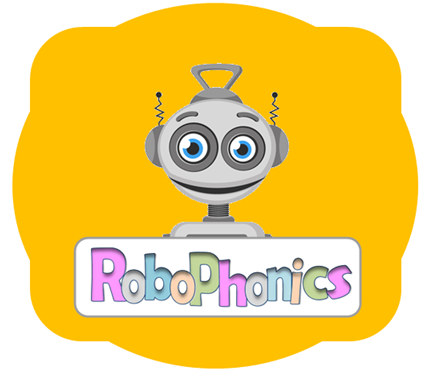Phonics & Early Reading
At Willows Primary School, we use Robophonics to teach early reading. This is a DfE validated synthetic phonics (SSP) teaching programme that has been developed for our school. This provides a structured and systematic approach to teaching phonics. The 44 sounds and corresponding letters are introduced and taught systematically. Children learn to blend sounds to read words. When reading, children recognise the letters (phonemes) and blend together the respective sounds. When writing a word, they identify the sounds and write down the corresponding letters (graphemes). Children then begin to read a series of levelled decodable texts, both fiction and non-fiction. Research shows that the progress made by children using this type of approach far exceeds that of children not taught using a synthetic phonics approach.
Please click the image below to find out more about how phonics is taught at
Willows Primary School.
Home Reading
Children at all ages within school are expected to read or be read to at home every day. Not only does regular reading enable children to become more fluent, but it also exposes them to so much more: vocabulary, grammatical structures, writing styles, different cultures and much more. We recognise that the more children read, the more confident they become and therefore the more they enjoy reading. In EYFS and KS1, children take home a decodable book to read independently and a book to read with an adult for pleasure as their home readers.
These books are ‘decodable reading books’. This means they are carefully aligned to your child’s knowledge of the different sounds they have been taught so far in their phonics lessons at school. These books will only include sounds and graphemes (letter groups) that your child has already been taught, which means they should be able to read these books to you with greater independence.
These books will be labelled with a picture of a robot to show that they are decodable and that the children should use the phonic knowledge and skills they have been practising at school to read them.
Please take the time to share this book with your child. Your child is not expected to know how to read the words in these ‘Share Me’ books. The intention is that your child enjoys listening to and discussing the stories with you. This will help develop your child’s language comprehension, which will make learning to read and write easier and more enjoyable.
Children love hearing familiar stories and joining in with any repetitive phrases. Each time they hear a story again, they notice and learn a little bit more. With this in mind, please aim to read the book once a day with your child.
How Can you Help At Home?
There are lots of simple things you can do at home to help your child learn phonics.
1. Learn how to say the sounds using the the 'How to Pronounce Pure Sounds' video.
2. Help your child practise saying the sounds. Make words for your child to read and blend.
3. Listen to your child read every day, just for five minutes. It really will make a difference. If your child gets stuck on a word, model how to say the sounds and blend them together. If you are worried that the book is at the wrong level for your child, check with your child's teacher.
4. Read aloud to your child every day to show them that reading is fun!


